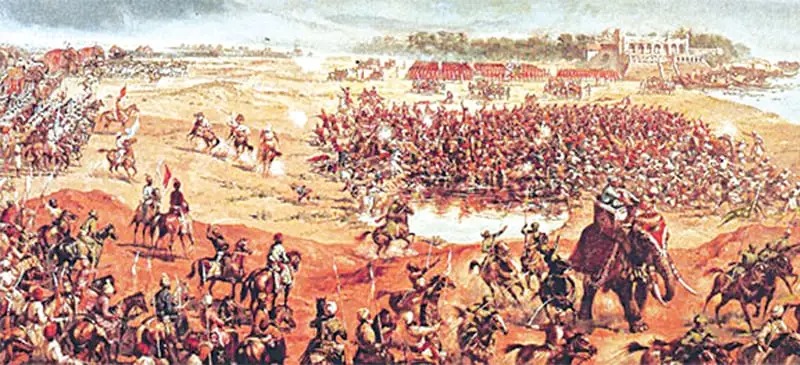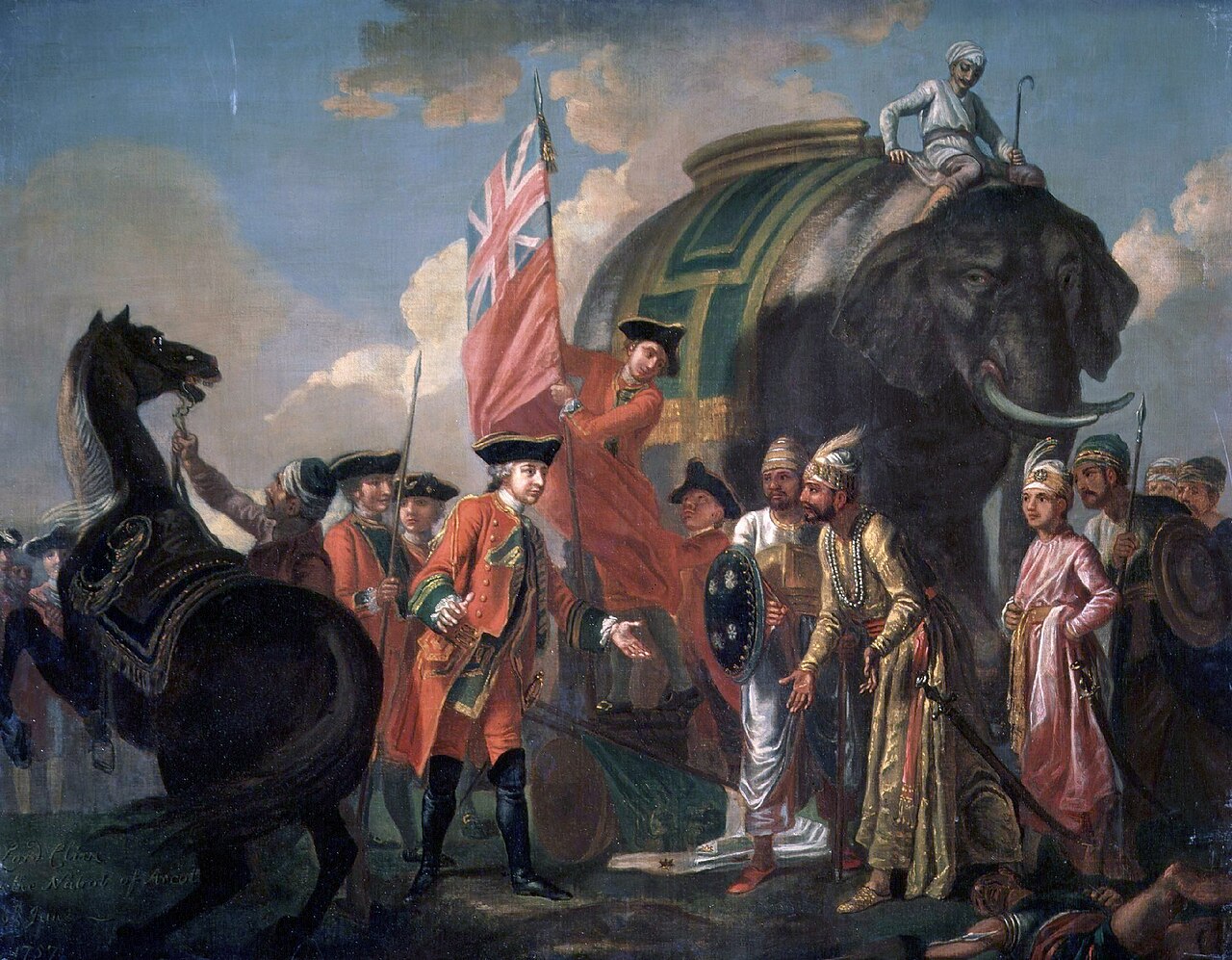Introduction
The Battle of Plassey (23 June 1757) was a pivotal event in Indian history, widely regarded as a decisive turning point that marked the beginning of the British East India Company’s political dominance in India. Fought between the British East India Company forces, led by Robert Clive, and the Nawab of Bengal, Siraj-ud-Daulah, the battle was less a major military engagement and more a consequence of treachery and political maneuvering. Its outcome had far-reaching consequences, paving the way for British colonial rule over much of the Indian subcontinent.
Background: The East India Company and Bengal:
By the mid-18th century, the British East India Company had established a significant trading presence in India. Bengal, under the rule of the Nawab, was a wealthy province and a key center of the Company’s trade. The Company enjoyed various privileges granted by previous Mughal rulers, but tensions began to rise with the young and assertive Siraj-ud-Daulah, who became the Nawab of Bengal in 1756.
- Growing Company Influence: The East India Company’s growing economic and political influence in Bengal was perceived as a threat by Siraj-ud-Daulah. He resented the Company’s fortifications of Calcutta without his permission and their alleged interference in internal politics.
- Black Hole of Calcutta (Disputed Event): Siraj-ud-Daulah attacked and captured Calcutta in June 1756. The controversial “Black Hole of Calcutta” incident, in which a number of British prisoners allegedly died in a small dungeon, further escalated tensions between the Nawab and the Company (historical accuracy of the Black Hole incident is debated by historians).
Causes of the Battle:
Several factors contributed to the outbreak of the Battle of Plassey:
- Trade Disputes and Privileges: Disputes over the Company’s trade privileges, customs duties, and perceived unfair trade practices fueled conflict.
- Fortification Issues: The Company’s unauthorized fortification of Calcutta angered Siraj-ud-Daulah, who saw it as a challenge to his sovereignty.
- Political Intrigue and Conspiracy: The East India Company, under the leadership of Robert Clive, engaged in secret negotiations and conspiracies with disgruntled elements within Siraj-ud-Daulah’s court, most notably Mir Jafar, Siraj-ud-Daulah’s commander-in-chief. Clive aimed to replace Siraj-ud-Daulah with a moreCompany-friendly Nawab.
Key Players:
- Siraj-ud-Daulah: The Nawab of Bengal, young and assertive, but also inexperienced and facing internal opposition.
- Robert Clive: A shrewd and ambitious East India Company official who played a key role in planning and executing the Company’s strategy at Plassey.
- Mir Jafar: Siraj-ud-Daulah’s commander-in-chief who secretly allied with the British, motivated by the promise of becoming the next Nawab.
The Battle and Treachery:
The Battle of Plassey itself was a relatively short and one-sided affair.
- Numerical Disparity: Siraj-ud-Daulah’s army was significantly larger than the Company’s forces. However, a substantial part of the Nawab’s army, under Mir Jafar, remained inactive during the battle due to the pre-arranged conspiracy.
- British Artillery and Discipline: The British forces, though smaller, were better disciplined and equipped, particularly with superior artillery.
- Treachery of Mir Jafar: The decisive factor was the treachery of Mir Jafar and a significant portion of the Bengali army, who either remained neutral or even switched sides during the battle. This effectively sealed Siraj-ud-Daulah’s defeat.
- Outcome: The battle was quickly won by the British East India Company. Siraj-ud-Daulah fled but was captured and later executed. Mir Jafar was installed as the new Nawab of Bengal, puppet ruler under British influence.
Consequences and Significance:
The Battle of Plassey had profound and far-reaching consequences for India.
- Establishment of British Political Dominance in Bengal: Plassey marked the beginning of British political control over Bengal, a wealthy and strategically important province. The East India Company transitioned from a trading company to a political power.
- Weakening of Nawab’s Authority: The Battle decisively weakened the authority of the Nawab of Bengal and placed him under British control. Mir Jafar became heavily dependent on the Company.
- Beginning of British Expansion: Plassey opened the door for further British expansion across India. Bengal became a base for launching subsequent conquests and extending British influence into other parts of the subcontinent.
- Economic Exploitation of Bengal: The British East India Company gained immense economic advantages in Bengal after Plassey, exploiting its resources and revenue for their own benefit. This led to the economic drain of Bengal and contributed to its impoverishment in the long run.
Historiography and Debate:
The Battle of Plassey is a subject of historical debate and varying interpretations.
- Battle or Conspiracy?: Some historians argue that Plassey was less of a true battle and more of a politically engineered outcome due to conspiracy and treachery rather than military prowess alone.
- Turning Point Narrative: While the battle’s significance as a turning point is widely accepted, some historians emphasize the gradual and complex nature of British expansion, arguing that Plassey was one crucial step in a longer process.
- Impact on Indian Sovereignty: Plassey is often seen as a symbolic loss of Indian sovereignty and the beginning of colonial rule, marking a significant shift in India’s political and economic trajectory.
The Battle of Plassey remains a highly significant event in Indian history, symbolizing the beginning of British colonial dominance and its long-lasting impact on the subcontinent.



Leave feedback about this